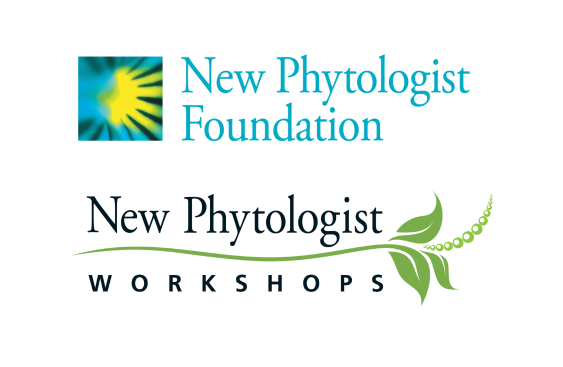Updates
A meeting report entitled 'Plants, fungi and oomycetes: a 400-million year affair that shapes the biosphere' authored by Marc-André Selosse, Christine Strullu-Derrien, Francis M. Martin, Sophien Kamoun and Paul Kenrick, was published in issue 206:2 (April 2015) of New Phytologist. Read the free to access report here.
Storify #NPW10: tweets from the 10th New Phytologist Workshop storified by Sophien Kamoun.
Goals
Our overall goal is to understand how plants and their eukaryotic symbionts (fungi and fungi-like microorganisms, especially oomycetes) co-evolved during the early development of terrestrial ecosystems. Several diverse and rapidly developing disciplines are relevant to addressing this goal. Our workshop is designed to bringing together experts from across these disciplines to learn about recent developments, understand the range of approaches and to explore potential cross disciplinary collaborations.
1. We will bring together a multidisciplinary group of specialists in the biology and phylogenetics of living bryophytes and of fungi, experts on the evolution of plant-fungal interactions (biochemical/physiological/ecological) and specialists on the early fossil record. Our focus will be to determine how expertise in these diverse disciplines could be harnessed to investigate the early evolution of key events, metabolic pathways, and symbiotic associations.
2. We will identify themes which cut across the different disciplines and how best to harness collaboration. For example, recent genomic and molecular clock analyses indicate that the origin of lignin decomposition coincided with the end of the Carboniferous Period. A carefully constructed investigation of Palaeozoic Era fossil plants (e.g. evidence of white rots) and analyses of sediment geochemistry documenting could test these hypotheses. A second area of interest is arbuscular mycorrhizal symbioses, where much remains to be learned about the early evolution of the trait. This would benefit from focused discussion by experts on living bryophyte/fungal systems, developmental biologists and palaeontologists. A third area of interest is the early evolution and development of soil ecosystems, in which the identification and characterisation of modern analogues could greatly assist interpretation of sediments in the early fossil record.
3. The proposed workshop is a first step in community collaboration. We will look for ways to develop and strengthen collaboration at an international level. We envisage building a scheme of communication and knowledge sharing through laboratory exchange visits, and to take the field forward we intend to explore the possibility of developing multidisciplinary research networks/consortia.
Rational and scope
Fungi and fungi-like eukaryotes are of key importance to the early development of terrestrial ecosystems. From the outset, microorganisms entered into relations with plants to varying degrees, which facilitated the colonization of the land with far reaching consequences for life and earth systems. Knowledge of early events has grown substantially over the past 15 years based on diverse sources of information, including plant genomics, phylogenetics, ecology and physiology as well as remarkable new evidence from the fossil record. Interest in early fossils in particular has been rejuvenated through recent developments in (1) understanding the phylogeny and diversity of modern eukaryotes and (2) genomic approaches, which are providing fascinating insights into the evolution of key groups and their metabolic pathways.
Recently, a significant source of new information on early plant eukaryotic symbionts has been discovered. Historic slide collections of petrified plants – originally made to document fossil plant anatomy – have been shown to contain a substantial and well-preserved microorganism component. The new fossil evidence has relevance to several current research areas, including calibrating the eukaryotic tree of life, understanding the sequence of appearance of key groups (e.g., clades of fungi, oomycetes), events (e.g., land colonization), relationships (e.g., mycorrhizae) and possible also metabolic pathways (e.g., lignin biosynthesis).
Several diverse disciplines are relevant to addressing our overall goal, but there is a lack of communication and understanding among these. Our workshop is designed primarily to begin to address this issue by bringing together experts from across the relevant disciplines to learn about recent developments, understand the range of relevant approaches and to explore potential cross disciplinary collaborations.
Organising Committee
Christine Strullu-Derrien (Natural History Museum, London, UK)
Paul Kenrick (Natural History Museum, London, UK)
Francis Martin (INRA, Nancy, France)
Marc-André Selosse (Muséum national d'Histoire naturelle, Paris, France).


